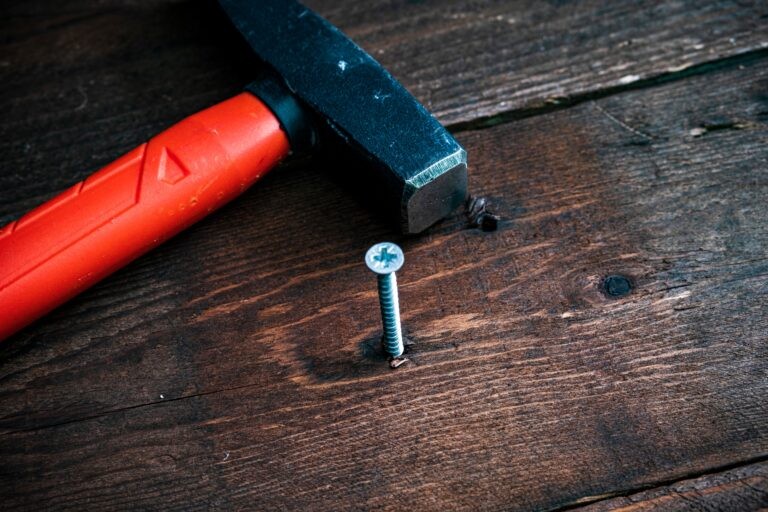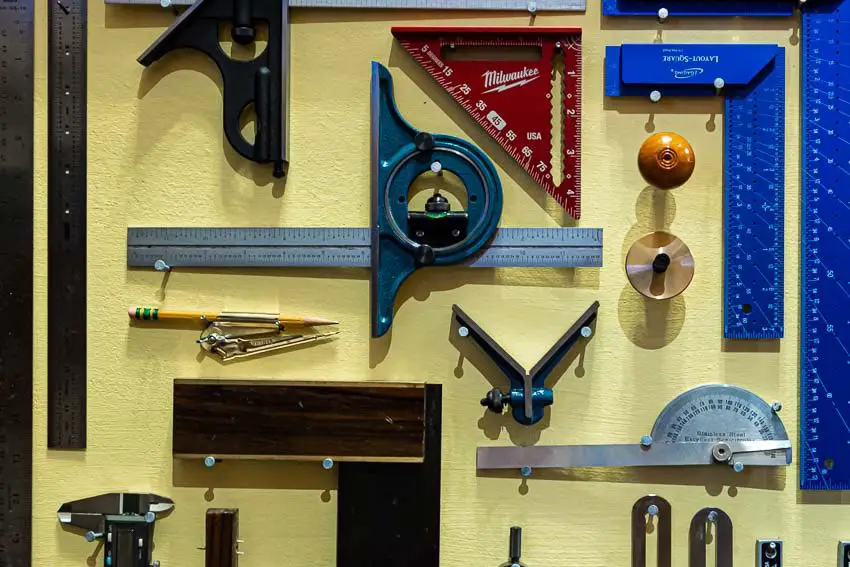Woodworking tools are designed for shaping and joining wood, while metalworking tools are used to cut, shape, and manipulate metal. These two types of tools are distinct in their construction, materials, and purposes.
Woodworking and metalworking are two popular artisanal crafts that require specific tools for different purposes. Each craft has its own set of tools designed to handle the unique challenges associated with working with wood or metal. Woodworking tools are specifically constructed to shape and join wood, while metalworking tools are used to manipulate and cut various types of metals.
Understanding the key differences between these two types of tools is essential for anyone interested in pursuing these crafts or working with different materials. We will explore the distinctions between woodworking and metalworking tools, including their construction, materials, and specific uses.

Credit: www.montecarlodata.com
Understanding The Key Differences
Woodworking and metalworking tools have distinct differences when it comes to their functions and materials. While woodworking tools are designed for working with wood and require precision, metalworking tools are specifically made for shaping and manipulating metal. Understanding these key differences is crucial for selecting the right tools for your project.
Woodworking Tools:
- Characteristics and Applications:
- Woodworking tools are specifically designed for working with wood materials.
- They are used in various woodworking projects, such as furniture making, cabinetry, and carpentry.
- Overview of Woodworking Tools and Their Primary Uses:
- Woodworking tools encompass a wide range of equipment, including saws, chisels, routers, and jigsaws.
- These tools are primarily used for cutting, shaping, and joining wood pieces together.
- How Woodworking Tools are Designed Specifically for Wood Projects:
- Woodworking tools feature blades or cutting edges that are optimized for wood materials.
- They prioritize precision, finesse, and control in their design to achieve accurate and detailed woodworking outcomes.
Types of Woodworking Tools:
- Introduction to Essential Woodworking Tools such as Saws and Chisels:
- Saws, such as table saws and miter saws, are essential for cutting wood pieces into desired shapes and sizes.
- Chisels are used for carving, detailing, and removing wood material.
- Spotlight on Specialized Woodworking Tools like Routers and Jigsaws:
- Routers are employed for decorative edge profiling, joinery, and hollowing out areas in wood.
- Jigsaws are versatile tools used for intricate curved cuts and shapes.
Key Features of Woodworking Tools:
- Discussion on Unique Features that Make Woodworking Tools Suitable for Woodworking Tasks:
- Woodworking tools are designed with adjustable features, allowing for precision and control.
- They focus on providing a smooth finish and clean cuts in wood.
- Highlighting Factors like Precision, Finesse, and Control in Woodworking Tool Design:
- Woodworking tools prioritize accuracy, ensuring that wood pieces fit together seamlessly.
- They offer greater control over the cutting process, enhancing the craftsman’s ability to shape wood accurately.
Pros and Cons of Woodworking Tools:
- Advantages and Disadvantages of Using Woodworking Tools in Various Woodworking Projects:
- Versatility: Woodworking tools can be used in a wide range of woodworking applications.
- Cost: Owning and maintaining woodworking tools can be expensive.
- Skill Requirements: Woodworking tools require practice and skill to achieve desired results.
Metalworking Tools:
- Characteristics and Applications:
- Metalworking tools are specifically designed for working with metal materials.
- They are used in projects such as metal fabrication, welding, and metal sculpting.
- Overview of Metalworking Tools and Their Primary Uses:
- Metalworking tools encompass a variety of equipment, including welders, grinders, plasma cutters, and sheet metal brakes.
- These tools are primarily used for cutting, shaping, and joining metal pieces together.
- How Metalworking Tools are Designed Specifically for Working with Metal Materials:
- Metalworking tools feature strong and durable components to handle the unique properties of metal.
- They prioritize power, durability, and heat resistance to withstand the demands of metalworking tasks.
Types of Metalworking Tools:
- Introduction to Essential Metalworking Tools such as Welders and Grinders:
- Welders are used to join metal pieces together through the application of heat and filler material.
- Grinders are essential for shaping, smoothing, and removing excess metal material.
- Spotlight on Specialized Metalworking Tools like Plasma Cutters and Sheet Metal Brakes:
- Plasma cutters utilize an ionized gas to cut through metal with precision and speed.
- Sheet metal brakes are employed for bending and shaping metal sheets with accuracy.
Key Features of Metalworking Tools:
- Discussion on Unique Features that Make Metalworking Tools Suitable for Metalworking Tasks:
- Metalworking tools have robust motors and cutting mechanisms to handle the toughness of metal.
- They focus on delivering efficient and accurate results in metal shaping and fabrication.
- Highlighting Factors like Power, Durability, and Heat Resistance in Metalworking Tool Design:
- Metalworking tools are designed to withstand the high temperatures generated during metalworking processes.
- They provide the necessary power and strength to handle heavy-duty metal materials.
Pros and Cons of Metalworking Tools:
- Advantages and Disadvantages of Using Metalworking Tools in Various Metalworking Projects:
- Precision: Metalworking tools offer precise control over metal cutting and shaping.
- Complexity: Working with metal materials requires knowledge of specialized techniques, making it more intricate.
- Safety Considerations: Metalworking tools pose specific safety risks, such as handling heat and sparks.
Comparing Woodworking and Metalworking Tools:
- Factors to Consider:
- Material Compatibility: Woodworking tools are designed for wood, while metalworking tools are specific to metal materials.
- Project Requirements: The type of project influences the choice between woodworking or metalworking tools.
- Personal Preference: Individual skillset, interest, and desired outcomes play a role in tool selection.
- Key Differences:
- Tool Design: Woodworking tools focus on precision and finesse, while metalworking tools prioritize power and durability.
- Performance: Woodworking tools excel in achieving intricate woodwork, while metalworking tools handle tough metal tasks.
- Functionality: Woodworking tools deliver smooth finishes and detailed cuts, while metalworking tools provide strength and robustness.
- Skill Requirements:
- Woodworking relies on techniques like joinery, carving, and an understanding of wood properties.
- Metalworking requires expertise in welding, cutting, and shaping metal materials, along with knowledge of metalworking safety procedures.
- Costs and Accessibility:
- Woodworking tools are generally more affordable and widely accessible compared to metalworking tools.
- The availability of materials, tool prices, and the learning curve must be considered when evaluating costs and accessibility.
Frequently Asked Questions On What Are The Key Differences Between Woodworking And Metalworking Tools?
What Is The Difference Between A Woodwork Machine And A Metal Work Machine?
A woodwork machine is used for working with wood, while a metal work machine is used for working with metal.
What Is Metalworking Tools?
Metalworking tools are instruments used to shape, cut, and manipulate metals for various purposes.
What Is Difference Between Woodworking And Carpentry?
Woodworking focuses on creating artistic pieces using wood, while carpentry focuses on building structures like furniture and houses.
Which Tool Is Considered As One Of The Essential Tools For Woodworking And There Are Different Kinds Of Square That We Can Use?
One essential woodworking tool is the square, which comes in different kinds for various purposes.
Conclusion
To sum up, woodworking and metalworking tools have distinct differences that make them suitable for specific tasks. Woodworking tools excel in shaping, carving, and joining wood materials, offering a wide range of flexibility and creativity. Metalworking tools, on the other hand, are designed for cutting, shaping, and joining metal, delivering durability and precision.
While both disciplines require skill, precision, and attention to detail, understanding the unique properties of each material is crucial in selecting the right tools. Woodworking tools typically have sharper edges and require less force, whereas metalworking tools are built to withstand high pressure and heat.
Whether you are a hobbyist or a professional, knowing the key differences between woodworking and metalworking tools will empower you to complete your projects efficiently and effectively. So, choose the right tools for your specific needs and start creating with confidence.
Happy crafting!


